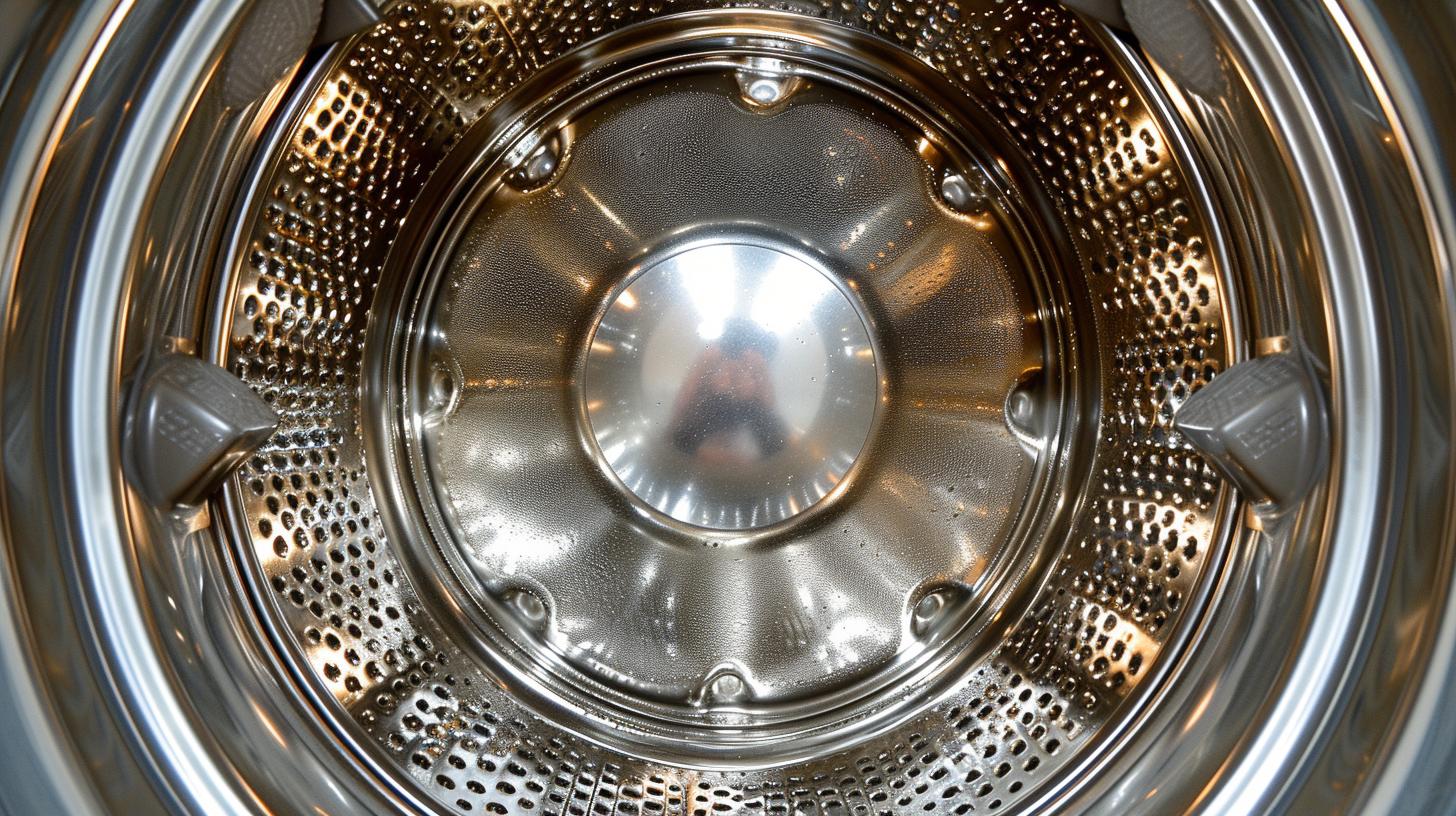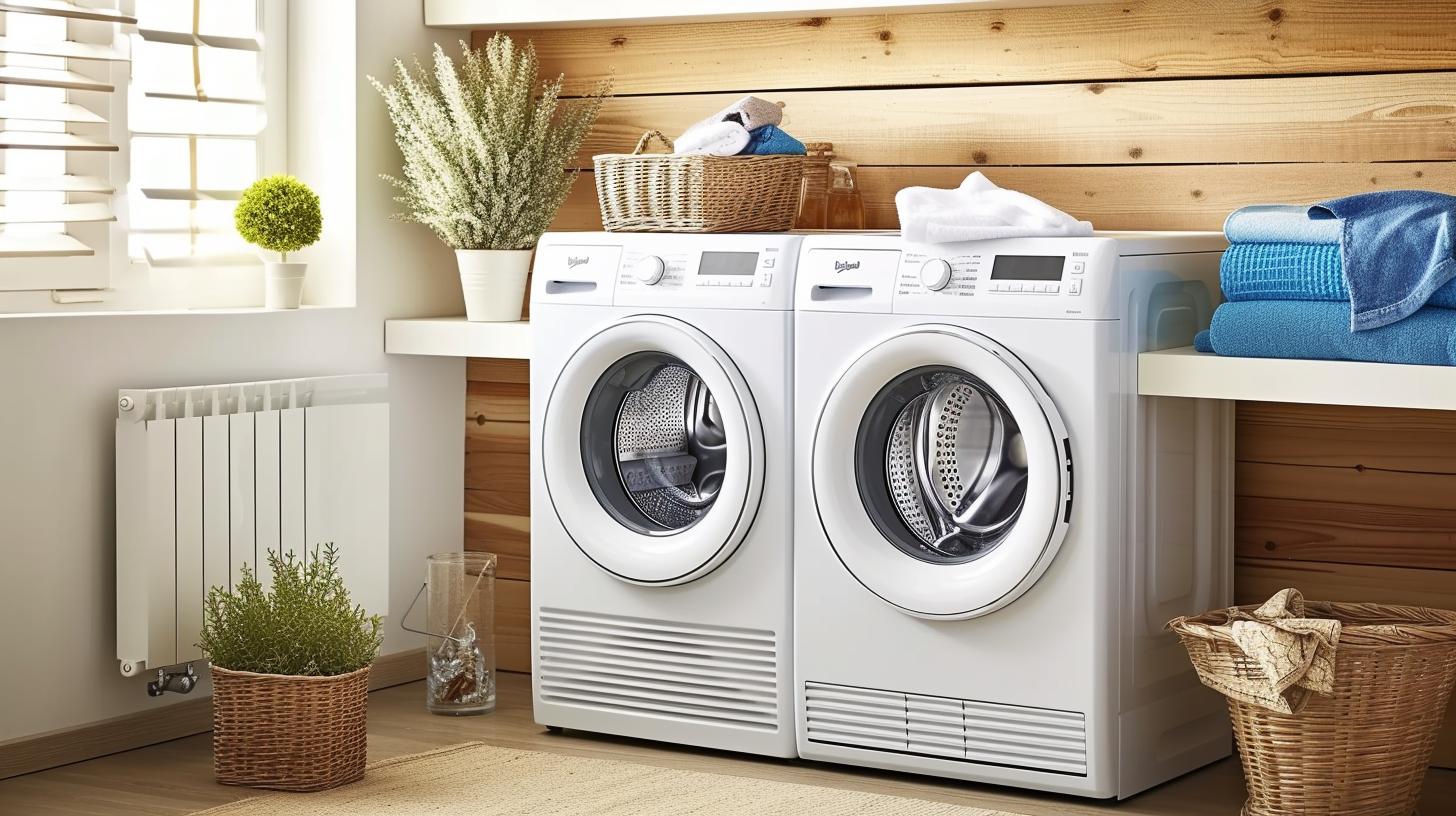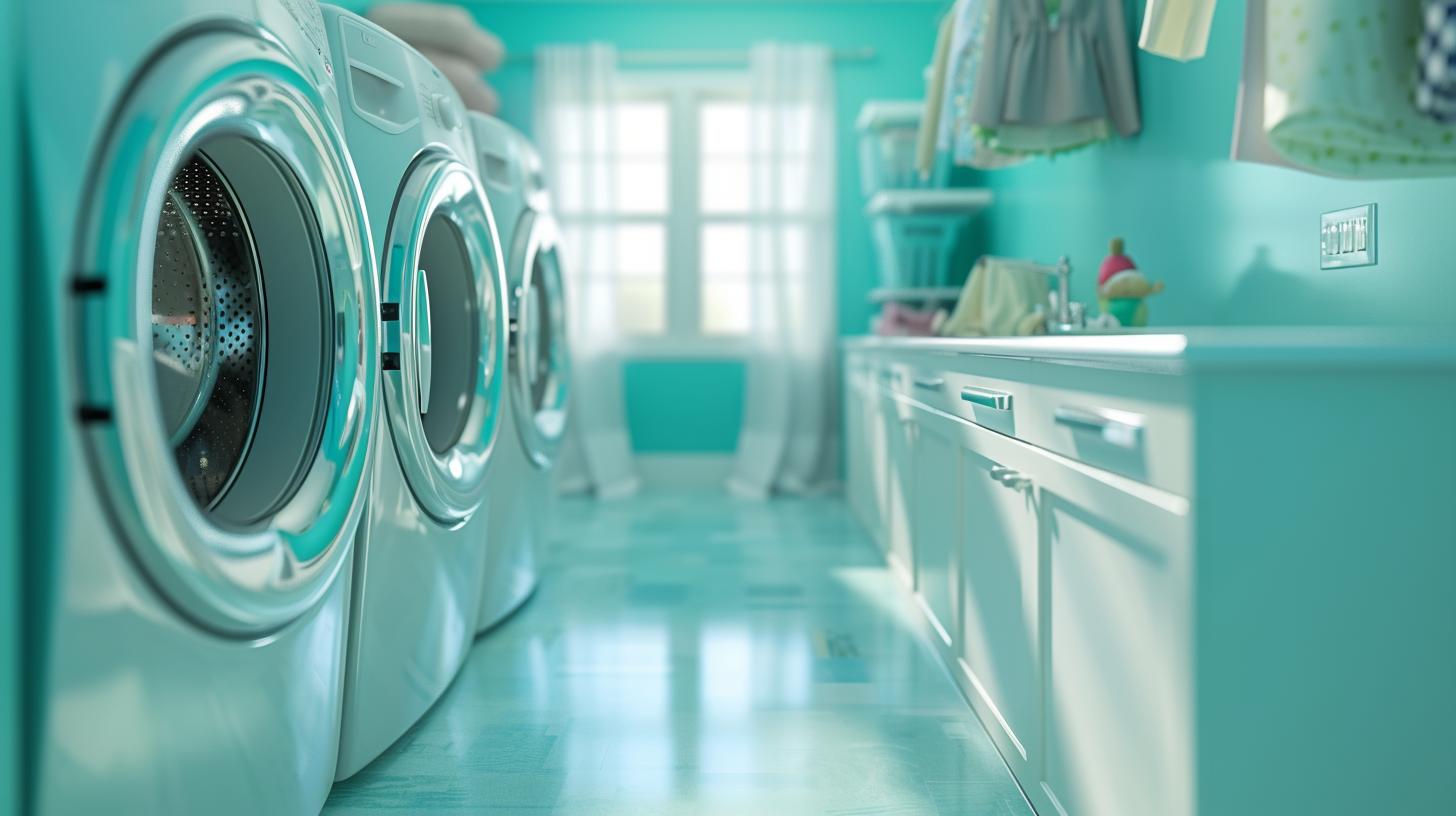The Whirlpool Washer Water Inlet Valve is a crucial component of your washing machine that regulates the flow of water into the appliance during the wash cycle. This valve controls the water temperature and pressure, ensuring that your clothes are washed effectively. Whether you are experiencing issues with water not entering the washer or leaks around the valve, it may be time to consider replacing your water inlet valve.
One common sign of a faulty water inlet valve is when there is no water entering the washer during the cycle. This can result in your clothes not being cleaned properly and lead to frustration. Another sign of a faulty valve is when there are leaks around the valve or underneath the washer. If you notice any of these signs, it’s important to diagnose and address the issue promptly.
Diagnosing a water inlet valve issue involves testing for continuity and inspecting for visible signs of damage or wear. By following a series of diagnostic steps, you can determine if the water inlet valve is indeed malfunctioning and needs replacement.
In order to replace a faulty water inlet valve, you will need specific tools and equipment such as a screwdriver, pliers, and a new water inlet valve that is compatible with your Whirlpool washer model. It’s important to ensure that you have all necessary items before beginning the replacement process.
Replacing a water inlet valve involves several steps such as unplugging the washer, removing the old valve, and installing the new one. It’s essential to follow a step-by-step guide to ensure proper installation and functionality of the new part. Additionally, proper maintenance tips can help extend the lifespan of your newly replaced water inlet valve.
Upgrading to a high-quality water inlet valve can offer numerous benefits such as improved performance, better control over water temperature and pressure, and enhanced durability. By investing in a quality replacement part, you can potentially avoid future issues with your Whirlpool washer.
Common Signs of a Faulty Water Inlet Valve
The water inlet valve in your Whirlpool washer is a crucial component that controls the flow of water into the machine. When this valve develops issues, it can lead to several common signs that indicate a faulty water inlet valve. Recognizing these signs can help you diagnose and address the problem before it causes further damage to your appliance.
One of the most common signs of a faulty water inlet valve is when the washer fails to fill with water or fills slowly. This can be attributed to a blockage or malfunction in the valve, preventing the proper amount of water from entering the machine. Additionally, if you notice that your washer overfills with water, it could be a clear indication that the inlet valve is not shutting off properly.
Another sign of a problematic water inlet valve is when your washer doesn’t fill at all, despite no issues with your home’s water supply. This could point to an electrical problem within the valve or a complete failure of the component. Additionally, if you hear unusual noises coming from the back of your washer during the filling cycle, such as buzzing or humming sounds, it may signal an issue with the water inlet valve solenoid.
Furthermore, if you notice leaks around the back of your washing machine, especially during the filling process, it could be due to a faulty water inlet valve. The constant flow of water through a malfunctioning valve can cause it to wear out and develop leaks over time. These leaks can lead to further damage to other components and should be addressed promptly.

Lastly, if you experience inconsistent water temperatures during different wash cycles despite setting them appropriately, it could indicate an issue with the hot and cold water supply controlled by the inlet valve. These erratic temperature changes can affect both your washing results and energy efficiency due to unnecessary heating adjustments.
Recognizing these common signs of a faulty Whirlpool washer water inlet valve early on will allow you to take necessary steps for diagnosing and resolving any potential issues before they escalate into more significant problems.
How to Diagnose a Water Inlet Valve Issue
When your Whirlpool washer is experiencing issues with the water inlet valve, it can be frustrating and inconvenient. However, diagnosing the problem doesn’t have to be difficult. By paying attention to certain signs and symptoms, you can accurately determine if the water inlet valve is indeed faulty.
Water Fails to Fill or Overflows
One of the most obvious signs of a faulty water inlet valve is when the washer fails to fill with water or if it overfills. If you notice that the tub isn’t filling up as it should, or if water continues to flow in even when it’s already full, this could indicate a problem with the water inlet valve.
Before jumping to conclusions, double-check that there are no issues with your home’s water supply or with the water pressure.
Strange Noises During Fill Cycle
Another clue that there may be an issue with the water inlet valve is if you hear strange noises during the fill cycle. If you notice any unusual humming, buzzing, or whining sounds coming from your washer while it’s filling up with water, this could point to a problem with the valve. It might be due to a malfunctioning solenoid within the valve assembly.
Leaks or Drips Around Valve
Inspecting for leaks around the water inlet valve can also help diagnose any issues. Look for any visible leaks or drips around the area where the valve connects to the washer’s tub or where its water hoses are attached. A leaky water inlet valve can lead to not only malfunctions in operation but also potential damage to surrounding components.
Erratic Water Temperature
If your washer’s temperature settings seem erratic and unresponsive, this could point towards a fault in the water inlet valve. The valve plays a crucial role in controlling hot and cold water intake into your washer based on your selected settings. If you find that your clothes are coming out at inconsistent temperatures despite proper settings, it may be worth investigating the state of your whirlpool washer water inlet valve.
By paying attention to these indicators and promptly addressing any potential issues associated with the whirlpool washer water inlet valve will save you time and money down the line.
Tools and Equipment Needed for Water Inlet Valve Replacement
When it comes to replacing a faulty water inlet valve in your Whirlpool washer, having the right tools and equipment is essential. Without the proper items, you may find yourself frustrated and unable to successfully complete the replacement. Before beginning the process of replacing the water inlet valve, it is important to gather all the necessary tools and equipment.

The first item you will need is a screwdriver set. This will come in handy for removing any screws that are securing the back panel of the washing machine. Additionally, having a socket wrench set will be crucial for removing nuts and bolts that are holding the water inlet valve in place. It is recommended to have a variety of socket sizes on hand to ensure you have the right size for each specific bolt.
Another important tool for this task is a pair of pliers. These will be useful for disconnecting hoses that are attached to the water inlet valve. Pliers with a good grip will make it easier to loosen and remove any clamps or connectors. Furthermore, having a towel or bucket nearby to catch any excess water that may spill during the process is also essential.
In addition to tools, there are also some equipment items you’ll need for water inlet valve replacement. A new water inlet valve specific to your Whirlpool washer model is obviously necessary. It’s essential to purchase a high-quality replacement part that matches your specific washer model to ensure proper function and compatibility. Lastly, having Teflon tape on hand can help ensure that connections between hoses and the new water inlet valve are secure and leak-free.
With these tools and equipment ready, you’ll be well-prepared to tackle the task of replacing your Whirlpool washer’s water inlet valve when needed. By ensuring you have everything at your disposal before starting, you can save time and frustration during the repair process while guaranteeing that everything goes smoothly and efficiently as possible.
Step-by-Step Guide to Replacing a Water Inlet Valve
Replacing a faulty water inlet valve in your Whirlpool washer is a task that can be done with the right tools and a little bit of know-how. Follow these step-by-step instructions to successfully replace your washer’s water inlet valve:
- Disconnect the power and water supply: Before starting any repair work on your washer, it is crucial to unplug it from the power source and turn off the water supply.
- Access the water inlet valve: Depending on the model of your Whirlpool washer, you may need to remove the top or back panel to access the water inlet valve.
- Remove the old water inlet valve: Once you have located the water inlet valve, carefully disconnect the electrical connectors and hoses attached to it. Use a screwdriver or wrench to loosen and remove any mounting screws or brackets holding the valve in place.
- Install the new water inlet valve: Position the new water inlet valve in place and secure it with any mounting screws or brackets. Reconnect the electrical connectors and hoses, making sure everything is properly sealed.
- Reassemble and test: Put back any panels that were removed to access the water inlet valve, then plug in the washer and turn on the water supply. Run a test cycle to ensure that the new valve is functioning properly.
By following these steps, you can successfully replace your Whirlpool washer’s faulty water inlet valve and restore its proper functioning.
It’s important to note that if you’re not comfortable with this level of repair work, it’s best to seek help from a professional technician. Also, always refer to your washer’s manual for specific instructions related to your model.
Regular maintenance of your washer’s water inlet valve can help prolong its lifespan and prevent issues from arising. Here are a few tips for keeping your water inlet valve in good condition:
- Regularly check for leaks or drips around the water inlet valve.
- Clean out any debris or mineral buildup in the filter screens of the inlet valves.
- Avoid using excessive force when connecting hoses to the inlet valves to prevent damage.
By following these maintenance tips, you can help ensure that your Whirlpool washer’s water inlet valve continues to function optimally for years to come.

Tips for Maintaining the Water Inlet Valve
Maintaining the water inlet valve in your Whirlpool washer is essential to ensure its proper functioning and longevity. By following these simple tips, you can keep your washer’s water inlet valve in top condition, preventing any potential issues that may arise.
Here are some tips for maintaining the water inlet valve:
1. Regular Cleaning: Over time, mineral deposits and debris can build up in the water inlet valve, leading to clogs and affecting water flow. It is recommended to clean the valve at least once every six months to prevent any blockages. You can use a solution of vinegar and water to dissolve mineral buildup and remove any debris from the screen.
2. Check for Leaks: Periodically inspect the area around the water inlet valve for any signs of leaks or moisture. A leaking inlet valve not only wastes water but can also lead to further damage to your washing machine. If you notice any leaks, it is important to address them promptly by tightening connections or replacing faulty parts.
3. Inspect Hoses: The hoses connected to the water inlet valve should be checked regularly for cracks, wear, or kinks. Any damaged hoses should be replaced immediately to prevent leaks and ensure proper water supply to the washer.
4. Test Water Pressure: Proper water pressure is crucial for the efficient operation of the water inlet valve. Use a pressure gauge to measure the water pressure coming into your washing machine. If the pressure is too low or too high, it can put strain on the inlet valve and other components of the washer.
5. Use a Water Softener: If you live in an area with hard water, consider using a water softener system in your home. Hard water contains minerals that can contribute to buildup in the inlet valve and other parts of your washing machine. A water softener can help reduce mineral deposits and extend the life of your appliance.
By implementing these maintenance tips, you can prolong the life of your Whirlpool washer’s water inlet valve and ensure smooth operation with minimal issues.
Benefits of Upgrading to a High-Quality Water Inlet Valve
In conclusion, upgrading to a high-quality water inlet valve for your Whirlpool washer can bring numerous benefits to the overall performance and longevity of your appliance. The water inlet valve is a crucial component that controls the flow of water into the washer, and ensuring that it is in top condition is essential for efficient operation.
One of the main benefits of upgrading to a high-quality water inlet valve is the improved durability and reliability it offers. High-quality valves are designed to withstand regular use and are less likely to malfunction or develop issues over time. This means less frequent replacements and repairs, saving you time and money in the long run.
Additionally, a high-quality water inlet valve can contribute to better washing results. A properly functioning valve ensures that the right amount of water enters the washer at the correct times, leading to cleaner and more efficiently washed laundry. This can also result in shorter cycle times and reduced energy usage, making your appliance more eco-friendly.
Furthermore, investing in a superior water inlet valve can contribute to overall peace of mind. Knowing that you have a reliable and durable component within your washer can alleviate concerns about potential breakdowns or disruptions to your laundry routine. This can ultimately lead to a more positive user experience with your appliance.

